Get our independent lab tests, expert reviews and honest advice.
Food additives to avoid
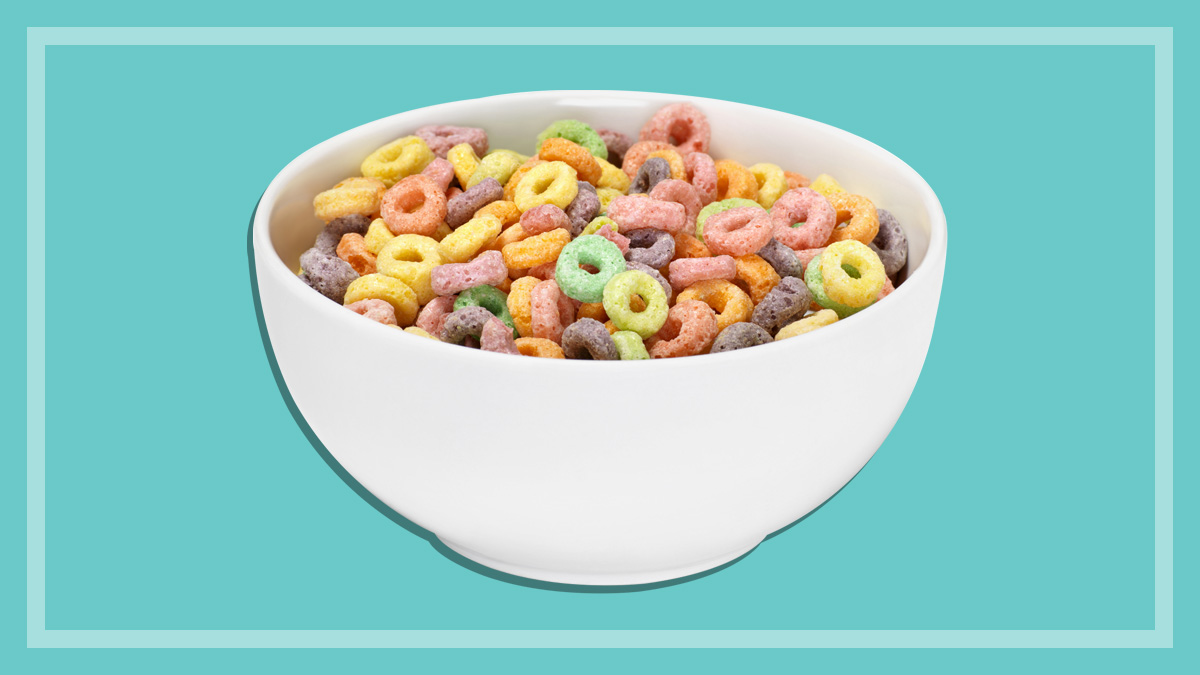
Food additives are often perceived to be unsafe and to be avoided. On the flipside, the food manufacturing industry and regulators say there are good reasons to use additives – to prevent food poisoning or extend a food’s storage life, for example.
On this page:
- Controversial additives
- Colours
- Preservatives
- Antioxidants
- Artificial sweeteners
- Flavour enhancers
- Unlabelled additives
- What the experts say
- How additives are regulated
The more highly processed foods you eat, the more additives you’ll eat too. So the easiest way to avoid them is to eat mainly fresh and only lightly processed foods, such as canned tomatoes and frozen vegetables.
But you can’t easily avoid eating additives altogether – even packaged bread often has several. And having a small number of dietary additives doesn’t usually do any harm to most people. However, given that discretionary foods make up nearly a third of the Australian diet, even the fast food industry has started to cut down its use of potentially harmful food additives.
We look at the latest research into the food additives that are permitted in Australia – and give our verdict on the ones you might want to avoid.

Controversial additives
The additives in question are from the following key categories:
- Colours (code numbers in the 100 range), which add or restore colour to foods.
- Preservatives (200 range), which help protect against food deterioration caused by micro-organisms.
- Antioxidants (300 range), which slow or prevent the oxidative deterioration of foods, such as when fats and oils go rancid.
- Artificial sweeteners (including intense sweeteners in the 900 range and bulk sweeteners such as sorbitol, 420), which create a sweet taste for fewer kilojoules than sugar.
- Flavour enhancers (mainly in the 600 range), which improve the flavour and/or aroma of food.
Other key additives
- Emulsifiers (mostly in the 400 range), which help stop oil and water mixtures from separating (in mayonnaise, for example).
- Stabilisers (mostly in the 400 range), which maintain the even dispersal of substances in foods such as ice cream.
Thickeners (including vegetable gums, which have code numbers mostly in the 400 range, and modified starches, which have code numbers in the 1000 range), which are used for foods such as thickened cream.
Colours
Colours and hyperactivity
The concern over artificial colours was fuelled by a UK government-funded study in 2010, which concluded that a mixture of colourings and the preservative sodium benzoate (211) could be linked to increased hyperactivity in some children.
The colours studied were tartrazine (102), quinoline yellow (104), sunset yellow FCF (110), carmoisine (122), ponceau 4R (124) and allura red AC (129).
The Food Standards Agency, the British food regulator, encourages food manufacturers to find alternatives to these colours and reports that some manufacturers and retailers in the UK have since taken action to stop using them.
Within the EU, foods containing these colours are now labelled with a mandatory warning: “May have an adverse effect on activity and attention in children.”
In Australia, the supermarket chain Aldi has removed these six colours from its own-brand products, as well as eight more colours: amaranth purple (123), erythrosine cherry red (127), indigo blue (132), brilliant blue (133), green (142, 143), black (151) and brown (155).
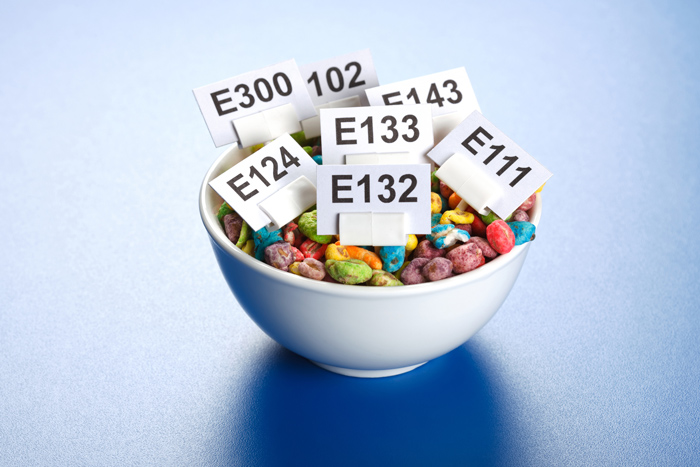
But Food Standards Australia New Zealand (FSANZ) says dietary exposure to added colours in food and beverages doesn’t pose a public health and safety concern for children in Australia.
According to a FSANZ representative, “All food additives including preservatives and colours undergo a safety assessment by FSANZ before they can be used in food or drinks sold in Australia or New Zealand.
“These safety assessments help to ensure the additive is safe at the levels being proposed and that there is a good technological reason for using it. This process also sets a safety limit for food additives so that no one, including children, would eat an unsafe level – even if they ate a large amount of foods containing the additive over a lifetime.”
FSANZ says dietary exposure to added colours in food and beverages doesn’t pose a public health and safety concern for children in Australia
But FSANZ does acknowledge that some people are sensitive to additives, even if they take precautions.
“Intolerances to food additives can occur in a small proportion of the population,” FSANZ says. “Food labels can help people who are sensitive to some food additives to avoid them. We also keep an eye on emerging science so if anything new comes up that causes us to be concerned about an additive we will review those levels to make sure they continue to be safe.”
But some people still argue that certain food additives can lead to health problems, even those that FSANZ has approved.
Colours and allergies
In the 1980s, concern centred on tartrazine, an artificial colour that can cause mild allergic-type reactions. Sunset yellow FCF can have a similar effect. Some animal studies have indicated sunset yellow can cause tumours, but the results aren’t consistent with other studies on rats and mice. Cochineal (120) can also cause allergic reactions in some people, including anaphylaxis, a particularly serious type of allergic reaction that can be fatal.
Contrary to popular assumptions, natural additives aren’t necessarily safer than artificial ones. For example, the natural colouring annatto (160b) – typically found in margarine, Cheshire cheese, smoked fish and cakes – can cause allergic-type reactions in some people.
Colours and cancer
Two long-term feeding studies showed that erythrosine (127) increases the incidence of thyroid tumours in rats. But a review of these and other available data by the Joint Expert Committee on Food Additives (JECFA), which is administered jointly by the Food and Agriculture Organisation of the United Nations and the World Health Organization (WHO), concluded the colour is safe. Even so, its use in Australia is restricted to glacé cherries only.
Tests have also linked allura red AC (129) with cancer in mice, but evidence of harm isn’t consistent or substantial. Claims that brilliant blue FCF (133) can cause cancer are largely unsubstantiated.
Our verdict
Colours in foods have no other function than to make the food look more appetising. In other words, they’re used for marketing reasons.
And given that they’re most often found in foods such as cordials, lollies, cakes and soft drinks, which we’re advised to have only as occasional treats anyway, it’s easy enough to avoid colour additives by avoiding these foods, or eating them only rarely.
In light of the UK food regulator’s decision to push for industry action to remove some of these colours altogether, we’d like to see FSANZ follow suit in Australia.
In the meantime, if your child shows signs of hyperactivity, cutting out foods that contain these colours from their diet could help. However, if you think your child has (or you have) an intolerance or allergy to any food or food additive, get advice from a doctor or dietitian – merely cutting out certain foods may not be the answer.
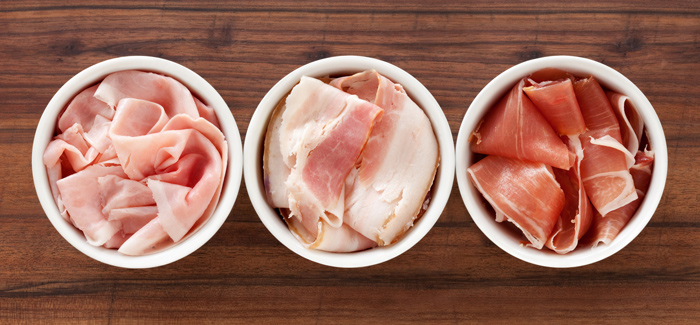
Preservatives
Soft drinks
In drinks, the combination of sodium benzoate (211) or potassium benzoate (212) and ascorbic acid (vitamin C in both its natural form and in the form of additive 300) can result in the formation of benzene, a known carcinogen. Exposing the bottle to heat or light during transport or storage can boost the amount of benzene that forms.
FSANZ tested 68 flavoured drinks, including flavoured mineral waters, cordials, fruit juices and fruit drinks, and found that 38 of the samples (56%) contained trace levels of benzene. Most had benzene levels below WHO guidelines for drinking water – 10 parts per billion (ppb) – but some contained levels of up to 40 ppb (1 ppb is the reference level for benzene in Australia’s more stringent drinking water guidelines).
Even more worryingly, a national diet survey in 2005 found that young children who consume lots of drinks that contain a form of benzoate (non-cola soft drinks, orange juice and cordial, for example) could be exceeding the acceptable daily intake (ADI) of benzoates.
Processed meats
The food preservatives potassium and sodium nitrite (249, 250) and sodium and potassium nitrate (251, 252) are typically used in processed cured meats such as ham and bacon. WHO’s International Agency for Research on Cancer classifies both as “probably carcinogenic to humans” because they can be converted into nitrosamines in the stomach. Nitrosamines increase the risk of cancer.
Bread
Calcium propionate (282) prevents mould growth on bread and is often heavily used as a preservative in humid, tropical countries and regions. It’s been linked to migraines and behavioural and learning problems, but these reports lack scientific credibility.
Wine and dried fruit
Preservatives that contain sulphur (220-228) – including sulphur dioxide (220), which is used in wine, beer, fruit juices, processed foods and dried fruit – can trigger asthma attacks. The 2005 national diet survey found that young children who eat lots of foods that contain sulphites, such as dried apricots, sausages and cordial, could be exceeding the ADI for sulphites.
Our verdict
Exposure to benzene in food and drink may be low compared with breathing air that contains benzene from traffic pollution or tobacco smoke, but it’s easily avoided. So it makes sense to steer clear of products that contain benzoates and ascorbic acid.
Cancer Council Australia and WHO recommend limiting or avoiding processed meats such as sausages, frankfurts, salami, bacon and ham. But keep in mind that the cancer risk is relatively small and that sodium nitrite prevents the growth of bacteria that cause botulism poisoning – which can be more dangerous, even deadly, in the short term.
People with asthma should avoid sulphur dioxide.

Antioxidants
BHA
BHA, butylated hydroxyanisole (320), is typically added to margarine and spreads, salad dressings, walnuts and pecans, and instant mashed potato.
WHO’s International Agency for Research on Cancer classifies it as “possibly carcinogenic to humans”. Some studies have shown that it causes cancer in rats, mice and hamsters.
But these studies are controversial because the cancer occurs in the forestomach, an organ humans don’t have.
Our verdict
It may be considered safe at the permitted low levels, but BHA can be replaced in foods by safer chemicals (such as vitamin E), safer processes, or simply left out completely. Check labels if you want to avoid it.
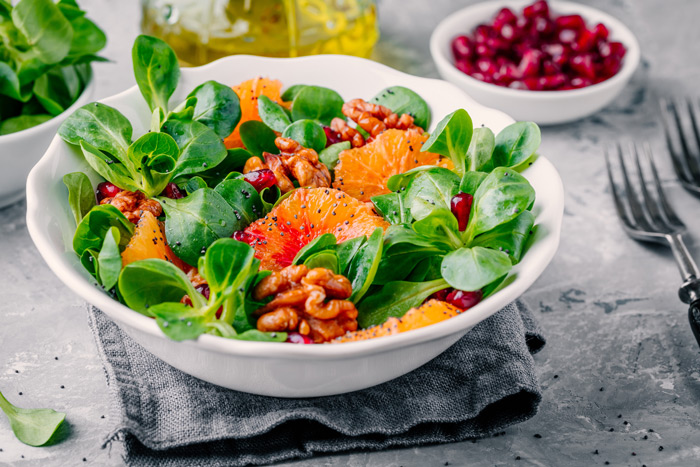
Artificial sweeteners
Artificial sweeteners can be hundreds of times sweeter than sugar. They’re typically used in diet (‘lite’) and low-sugar foods and drinks. Reports link many of them to cancer.
Artificial sweeteners and cancer
In the 1970s, several studies of rats that were fed very large amounts of saccharin (additive 954) found its use was associated with a higher incidence of bladder cancer. It was banned in Canada, and until 1996 products containing saccharin in the US had to be labelled with a warning. But research in humans largely failed to confirm that risk, and in 2000 the US government’s National Toxicology Program delisted saccharin as a possible carcinogen.
Research in 2005 from the European Ramazzini Foundation (updated in 2007) found that feeding rats aspartame (951) at doses that simulated the levels considered safe for humans increased the rats’ risk of leukaemia, lymphoma and breast cancer.
Another intense sweetener, cyclamate (952), was banned in Canada, the UK and the US more than 30 years ago because animal studies indicated links to cancer, but this ban was lifted in the UK in 1996 following further studies. However, another UK survey found that some children could be consuming up to twice the ADI for cyclamate.
A survey by FSANZ found that one in 20 Australian children were exceeding the acceptable daily intake (ADI0 for cyclamate). Cyclamate is still approved for use in Australia.
Artificial sweeteners and pregnancy
In 2010 Danish researchers linked the consumption of artificially sweetened, but not sugar-sweetened, soft drinks to preterm delivery of babies. The study couldn’t distinguish between the various artificial sweeteners, but aspartame and acesulfame-potassium are the most widely used.
The authors suggest the cause may be the methanol released when aspartame breaks down in the container or in the body, but more research is needed. In the meantime, pregnant women might want to avoid artificial sweeteners.
In 2010 Danish researchers linked the consumption of artificially sweetened soft drinks to preterm delivery of babies
Artificial sweeteners and other health concerns
Aspartame has also been linked to headaches, allergies and changes in behaviour. But a review funded by industry of more than 500 studies, including the Ramazzini research, concluded that aspartame is safe at current levels of consumption as a ‘non-nutritive’ sweetener (one that contains neither nutrients nor calories). Many scientists remain concerned about the Ramazzini Foundation results, but FSANZ and the US food regulatory authority both told us they see no reason to change their view that aspartame is safe.
Our verdict
Being overweight is certainly a bigger risk to your health than eating artificially sweetened products.
Sweeteners have often been recommended as a weight-loss aid, but there’s conflicting research about the health credentials of artificially sweetened drinks. Some studies show that regular consumption reduces the intake of calories and promotes weight loss or weight maintenance. But other research shows no effect, and some studies even show weight gain. There is also emerging research on the effect of artificial sweeteners on the gut microbiome and its relationship to glucose intolerance, but more studies are needed.
Overall, the jury’s still out on the absolute safety of artificial sweeteners, so it makes sense to limit your and your children’s intake of foods and drinks that contain them. Losing weight without the help of artificial sweeteners would be the best outcome.
Those who should definitely avoid aspartame are people with the rare metabolic disorder phenylketonuria, or PKU, who must limit their intake of phenylalanine, an amino acid in aspartame.
Flavour enhancers
Flavour enhancers such as glutamates (621-625) are found in many foods, including packet soups, flavoured noodles, sauces and savoury snacks. When glutamate touches the taste receptors on our tongue, it gives food a savoury taste (sometimes known by the Japanese-derived word ‘umami’). Mixed with a meal, glutamate balances, blends and enhances the total perception of flavour.
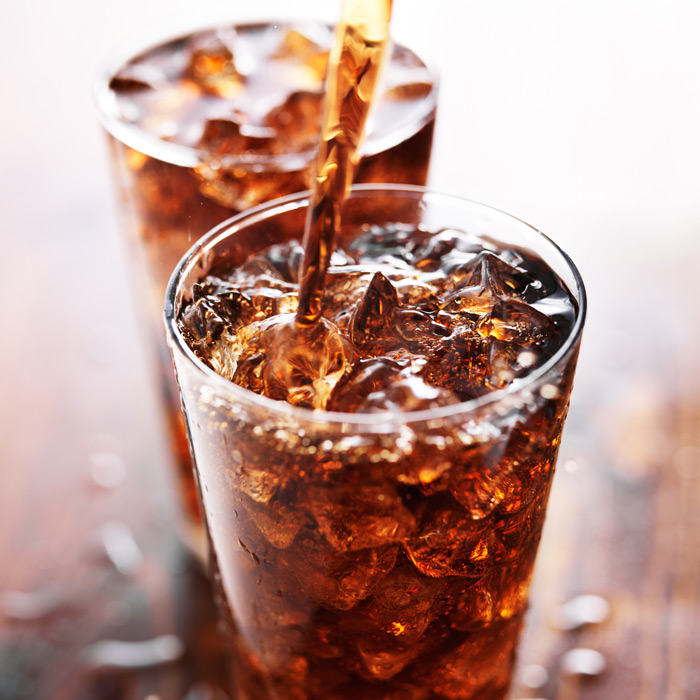
Some foods – tomato products, fermented sauces (such as soy sauce or oyster sauce) and long-matured cheeses such as stilton and parmesan – are naturally high in glutamate.
Because MSG still has such a bad reputation (despite the lack of hard evidence that it causes any harm), some manufacturers use other sources of glutamate to give processed foods the extra taste. These include protein extracts from corn, yeast or soy, which are processed to release the glutamate.
People sensitive to monosodium glutamate (MSG, 621) may have short-term reactions such as headaches, flushing and numbness when they eat foods that contain large amounts of MSG, and some asthmatics may also be susceptible.
Our verdict
For most people MSG and other glutamates are harmless. If you’re sensitive to MSG, check labels for it.
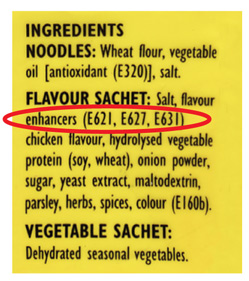
Unlabelled additives
You can avoid specific additives in packaged foods by looking at the ingredients list.
Additives must be identified by their function, then by their name (for example, preservative: sulphur dioxide), or by their code number (for example, preservative 220).
But this use of either names or codes, which can vary from one manufacturer to the next, can make it hard to compare which additives are in different products. And there are some exceptions:
Flavourings
Whether natural, nature-identical (chemically identical to natural flavours) or artificial, flavourings don’t have code numbers and may be labelled simply as ‘flavouring’ or ‘flavour’. According to FSANZ, the vast number of flavouring substances permitted in food means it wouldn’t be realistic to force manufacturers to list all their actual names.
The 5% loophole
If an additive is present in an ingredient, that ingredient makes up less than 5% of the complete food product, and the additive isn’t considered to perform a technological function in the final food, it doesn’t have to be listed.
Processing aids
Listing these isn’t a legal requirement, even though traces may be present in the food. Enzymes are an example: they have multiple uses in food production, including boosting bread-loaf volume, assisting with the removal of meat protein from bones, and breaking down fruit to release more juice.
Ice-structuring protein (ISP), a genetically modified fish protein used in ice cream to control the size and growth of ice crystals, is another.
Our verdict
We want one clear labelling system for additives – such as standardising the use of names and numbers – so it’s easier to avoid them and to compare what’s in different foods.
Food labelling should also be extended to include all additives, including processing aids, even if they’re present in very small amounts.
What the experts say
A 2018 article about allergies to food additives reported that “Contrary to the general public’s perception, the prevalence [of reactions to food additives] seems to be rather low. The few studies from Denmark reported a prevalence of 1–2% in children and 1% in adults.”
But according to accredited practising dietitian Frances Walker, from The Food Intolerance Dietitian in Victoria, sensitivities to food additives may be more common.
“Symptoms to food additives are often reported in my food-sensitive clients,” says Walker. “I see many a person who cites symptoms such as rashes, mood swings, fatigue, diarrhoea, feeling very hungover (although no alcohol was consumed), sleeplessness, mouth ulcers and more after consuming certain food additives.
Proper diagnosis is the best way to learn what your body can tolerate, and what you should avoid
“Despite a lack of robust evidence to support links between many food additives … I see many sensitive adults and children whose symptoms not only improve when the problematic food additives … are removed, but reappear when these additives are individually challenged.”
If you believe you may be sensitive to any food additives, proper diagnosis is the best way to learn what your body can tolerate, and what you should avoid.
“While links between symptoms and food additives are not always supported in the literature, a simple elimination and challenge with the additive in question can often clarify if a sensitivity is present,” says Walker. “This is best done with the guidance of a specialised dietitian to minimise any impacts on nutritional quality and balance, especially for children.”
How additives are regulated
The use of food additives in Australia is governed by the Food Standards Code and regulated by FSANZ. When applying to use a new additive, a manufacturer must provide evidence to FSANZ of its safety, as well as the technological reason for its use. FSANZ reviews the safety evidence before it approves an additive for use and reviews new research as it becomes available, but it doesn’t carry out safety testing of its own.
FSANZ also does an exposure assessment to estimate the likely amount that would be consumed if the food additive were permitted for use. This amount is compared with the acceptable daily intake (ADI) recommended by scientific experts, which is the amount you can consume every day without damaging your health. FSANZ then recommends a maximum permitted level of the food additive in particular foods, based on technological need and providing it’s within safe limits.
